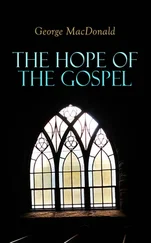George Fitch - The Critic in the Orient
Здесь есть возможность читать онлайн «George Fitch - The Critic in the Orient» — ознакомительный отрывок электронной книги совершенно бесплатно, а после прочтения отрывка купить полную версию. В некоторых случаях можно слушать аудио, скачать через торрент в формате fb2 и присутствует краткое содержание. Жанр: periodic, foreign_antique, foreign_prose, на английском языке. Описание произведения, (предисловие) а так же отзывы посетителей доступны на портале библиотеки ЛибКат.
- Название:The Critic in the Orient
- Автор:
- Жанр:
- Год:неизвестен
- ISBN:нет данных
- Рейтинг книги:5 / 5. Голосов: 1
-
Избранное:Добавить в избранное
- Отзывы:
-
Ваша оценка:
- 100
- 1
- 2
- 3
- 4
- 5
The Critic in the Orient: краткое содержание, описание и аннотация
Предлагаем к чтению аннотацию, описание, краткое содержание или предисловие (зависит от того, что написал сам автор книги «The Critic in the Orient»). Если вы не нашли необходимую информацию о книге — напишите в комментариях, мы постараемся отыскать её.
The Critic in the Orient — читать онлайн ознакомительный отрывок
Ниже представлен текст книги, разбитый по страницам. Система сохранения места последней прочитанной страницы, позволяет с удобством читать онлайн бесплатно книгу «The Critic in the Orient», без необходимости каждый раз заново искать на чём Вы остановились. Поставьте закладку, и сможете в любой момент перейти на страницу, на которой закончили чтение.
Интервал:
Закладка:
In this Oriental tour the stamp of strange religions is over all the lands. The temple is the keynote of each race. And religion with the Oriental is not a matter of one day's worship in seven: it is a vital, daily function into which he puts all the dreamy mysticism of his race. The first sight of several Mohammedans bowed in the dust by the roadside, with their faces set toward Mecca, gives one a strange thrill, but this spectacle soon loses its novelty. Everywhere in the Far East religion is a matter of form and ceremony: it includes regular visits to the temple and regular prayers and offerings to the deities enshrined in these houses of worship. But it also includes a daily ritual that must be observed at certain fixed hours, even though the believer may be in the midst of the crowded market place. The spiritual isolation of an Oriental at his prayers in any big city of the Far East is the most significant feature of this life – so alien to all the mental, moral, and religious training of the Occident. Vain is it for one of Anglo-Saxon strain to attempt to bridge this abyss that lies between his mind and that of the Burman or the Parsee. Each lives in a spiritual world of his own and each would be homesick for heaven were he transferred to the ideal paradise of the other. So the traveler in the Orient should give heed to the temples, for in them is voiced the spiritual aspirations of the people, who have little of comfort or hope to cheer them in this world.
JAPAN, THE PICTURE COUNTRY OF THE ORIENT
First Impressions of Japan and The Life of The Japanese
Yokohama looks very beautiful to the traveler who has spent over two weeks on the long sea voyage from Seattle; but it has little to commend it to the tourist, for most of its native traits have been Europeanized. It is noteworthy, however, as the best place except Hongkong for the traveler to purchase an oriental outfit and it is probably the cheapest place in the world for trunks and bags and all leather goods. Its bund, or water-front, is spacious and its leading hotels are very comfortable.
Of Japan and the Japanese, all that can be given are a few general impressions of the result of two weeks of constant travel over the empire and of talks with many people.
Of the country itself, the prevailing impression of the tourist, who crosses it on the railroad or who takes rides through the paddy fields in a rickshaw, is of a perennial greenness. Instead of the tawny yellow of California in October, one sees here miles on miles of rice fields, some of vivid green, others of green turning to gold. The foothills of the mountains remind one of the foothills of the Sierra Nevada, as they all bear evidences of the rounding and smoothing of glacial action.
At a distance the rice fields look like grain fields, but seen near at hand they are found to be great swamps of water, with row on row of rice, the dead furrows either serving as ditches or as raised paths across the fields. Every bit of hillside is terraced and planted to rice or vegetables or fruit.
Often these little, terraced fields, which look like the natural mesa of southern California, will not be over fifty feet long by ten or fifteen feet wide. Between the rows of fruit trees are vegetables or corn or sorghum. The farmers live in little villages and apparently go home every night after tilling their fields. There are none of the scattered farmhouses, with trees around them, which are so characteristic a feature of any American rural scene.
The towns as well as the cities show a uniformity of architecture, as most of the shops are one story or a story and one-half, while the residences seem to be built on a uniform plan, with great variety in gateways and decoration of grounds. Most of the roofs are made of a black clay, corrugated so that it looks like the Spanish-American tile, and many of the walls that surround residences and temples are of adobe, with a tiled covering, precisely as one sees to-day the remains of adobe walls in old Spanish-Californian towns.
The general impression of any Japanese city when seen from a height is that of a great expanse of low buildings with a liberal sprinkling of trees and a few pagodas or roofs of Buddhist temples.
The strongest impression that the unprejudiced observer receives in Japan is of the small value set upon labor as well as upon time by the great mass of the people. In Yokohama and in Kobe, which show the most signs of foreign influence, the same traits prevail.
It is one of the astonishing spectacles of the world, this accomplishment of the business of a great nation by man power alone. Only in one city, Osaka, the Chicago of Japan, is there any general evidence of the adoption of up-to-date methods in manufacturing. Everywhere one sees all the small industries of the country carried on in the same way that they were conducted in Palestine in the time of Christ.
Everywhere men, harnessed to heavy push carts, are seen straining to haul loads that are enough for a horse. The few horses in the cities are used for heavy trucks, in common with bulls, for the Japanese bull is a beast of burden and not one of the lords of creation as in our own country.
The bull is harnessed with a short neckyoke and a saddle on his back, which bears a close resemblance to the riding saddle of the Cossack. Some rope traces are hitched to crude, home-made whiffletrees. The bull, as well as the horse, is guided by a rope line. The carts are remarkably heavy, with wheels of great weight, yet many of these carts are pulled by two men.
In the big cities may be seen a few victorias, or other carriages, and an occasional motor car, but both these means of conveyance can be used with safety only on the broadest avenues. In the narrow streets of the native quarter, which seldom exceed ten feet in width and which have no sidewalks, the jinrikisha is the only carriage. This is a light, two-wheeled gig, drawn by one man and frequently on the steep grades pushed from the back by a second man. The rickshaw man has a bell gong on one shaft, which he rings when approaching a sharp turn in the street or when he sees several trucks or other rickshaws approaching. The bell also serves to warn old people or children who may be careless, for the rickshaw has the right of way and the pedestrian must turn to either side to give it the road. Americans, who are far more considerate of the feelings of the Japanese than other foreigners, frequently may be seen walking up the steep grades in such hilly cities as Nikko, Nara and Kobe, but long residence in Japan is said to make everyone callous of the straining and the sweating of the rickshaw man.
Purposely my itinerary included a number of little towns, which practically have been uninfluenced by foreign customs. In these places may be seen the primitive Japanese life, unchanged for hundreds of years. Yet everywhere one cannot fail to be impressed by the tireless industry of the people, and by their general good nature and courtesy.
In any other country in the world, a party of Americans with their foreign dress would have provoked some insulting remarks, some gestures that could not be mistaken; but here in rural Japan was seen the same perfect courtesy shown in the Europeanized sections of the big cities. The people, to be sure, made no change in their way of life. Mothers suckled their infants in front of their little shops, and children stood naked and unashamed, lost in wonder over the strange spectacle of the party of foreign people that dashed by in rickshaws.
Naked men, with only a G-string to distinguish them from the costume of Adam before the expulsion from Eden, labored at many tasks, and frequently our little cavalcade swept by the great Government schools where hundreds of little Japanese are being educated to help out the manifest destiny of the empire.
Читать дальшеИнтервал:
Закладка:
Похожие книги на «The Critic in the Orient»
Представляем Вашему вниманию похожие книги на «The Critic in the Orient» списком для выбора. Мы отобрали схожую по названию и смыслу литературу в надежде предоставить читателям больше вариантов отыскать новые, интересные, ещё непрочитанные произведения.
Обсуждение, отзывы о книге «The Critic in the Orient» и просто собственные мнения читателей. Оставьте ваши комментарии, напишите, что Вы думаете о произведении, его смысле или главных героях. Укажите что конкретно понравилось, а что нет, и почему Вы так считаете.












